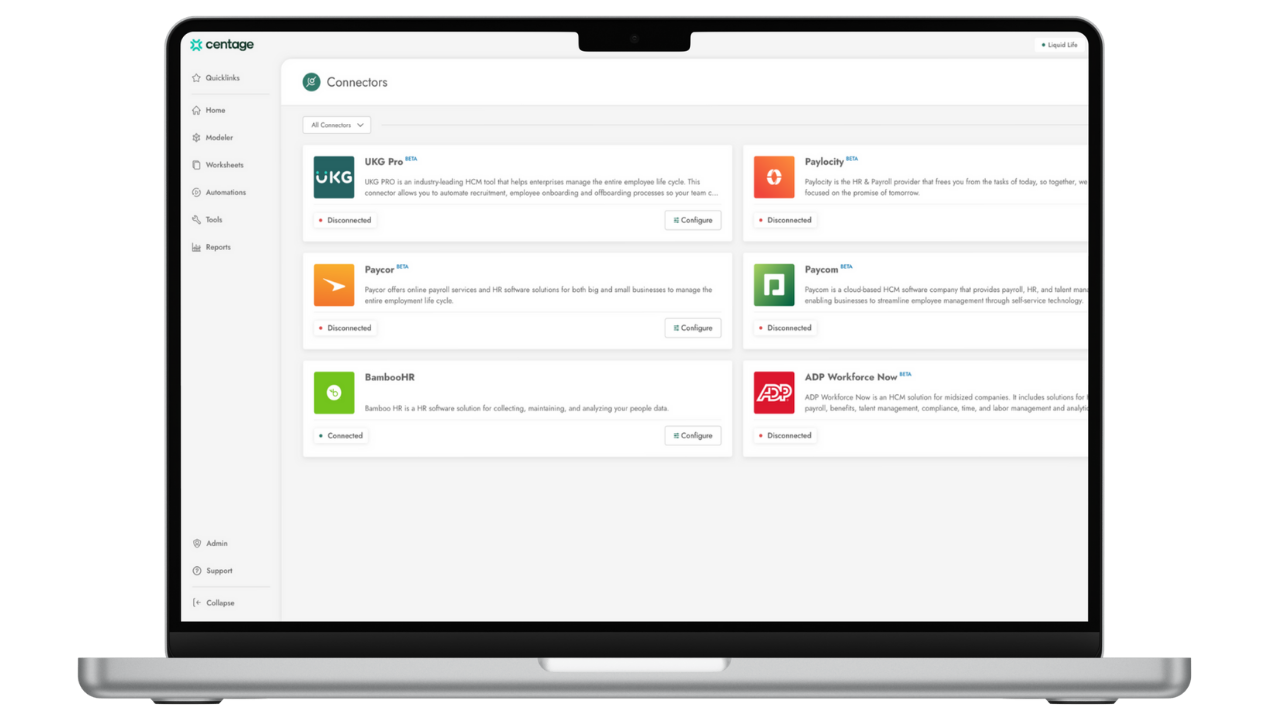Why Data is so Important to Manufacturing Budgets
Technology has been a boon for manufacturing in many different ways, from online ordering, to faster invoicing, to optimizing sales teams. With data collecting sensors and Internet of Things (IoT) devices, businesses can predict maintenance and replacements for critical equipment, which helps to avoid downtime.
While all of this data helps manufacturing companies to be more efficient, when it comes it comes to creating a manufacturing budget, data is also just as critical. Today, there is more data available than ever before, so using the right budgeting and planning tools can create accurate manufacturing budgets that stabilize, and even accelerate, a company toward their goals.
What is a manufacturing budget?
A manufacturing budget centers around the expenses involved in the production of a given product. It’s made up of three parts: direct materials, labor costs, and overhead costs for the number of units predicted. It’s part of the overall production budget.
With this information, organizations can understand the manufacturing costs of producing an item and can analyze where cost-cutting can occur in the future. It also informs the pricing strategy for the product.
How data leads to better manufacturing budgeting
A manufacturing budget on its own is a point of data for use by the larger organization. But by leveraging historical and current information, manufacturers can build more accurate budgets that can be sliced and diced to create the greatest cost savings and most efficient management of production and overhead.
At a macro level, all manufacturers understand that cost increases are a fact of life. As the raw materials needed for production goes up, so does the cost of creating the product. Cost increases for raw materials can be estimated based on historical data, but that may leave a direct materials budget short. It could also mean more budget is reserved for a cost increase that never materializes, limiting cash flow that could be used elsewhere.
A deeper dive into the data may show an average increase over a number of years but a cyclical increase during shorter periods. For instance, a certain raw material may jump 12 percent over a three year period, but historical data shows only minor adjustments of 3 percent for two years, and then a large increase of 6 percent in the third.
Direct labor is another area where analyzing data can lead to cost savings and a better budget. For companies with seasonal sales cycles, labor hours can be a variable cost that may be more costly right at the moment it's needed most. Production adjustments can then be made to better control labor costs.
These same labor statistics could tie in with overhead costs. Can production be increased earlier in the year to save on labor costs, and if so, does the company really save money because additional warehouse space is needed?
With sensor data, companies can predict capital costs like equipment replacement and maintenance downtime more accurately. Instead of allocating budget because it’s assumed a piece of equipment will fail in the coming year, data from IoT devices can build a better picture of the equipment’s life cycle. Companies can budget for new equipment at the right time.
Easier and more accurate manufacturing audgets
Companies need better planning tools to reap the benefits of the data at their disposal. Spreadsheet programs like Excel can slow down the annual budget process and keep an organization from leveraging all of the available data. These tools should allow them to use data to plan well, collaborate across the organization with key departments, and create scenarios to better understand efficiencies and cost-saving opportunities.
The right budgeting and planning tools pull in data from a number of sources, comparing and contrasting seemingly unrelated information into a holistic picture of how the business operates. Marketing data may indicate a potential increase in product interest based on social media buzz, and manufacturing may be able to take advantage of that knowledge to lock in lower raw material rates for the coming year.
Collaboration can also mean opportunities to optimize the manufacturing budget, and typically results in better communication between different departments, like sales and manufacturing. If manufacturing is showing an increase in cost based on budget inputs, the sales team should receive that information for the sales budget to make appropriate adjustments.
Scenario planning can be critical to cost-savings, as well. Manufacturing budgets can be adjusted based on the results of what-if scenarios, like the offer from a vendor to provide materials at a reduced rate based on a significant increase in items ordered. Does the manufacturing overhead budget show that storing the additional inventory saves the company money? Scenario planning can help clarify the actual savings or costs associated with an opportunity.
FP&A software for manufacturing organizations
With Centage, manufacturing organizations are able to plan, save time, and simplify financial processes:
- Easily calculate and analyze product costs by applying allocation bases such as labor hours, machine hours, and production units to ensure accurate cost of sales/goods sold.
- Create detailed plans based on key drivers like average selling price, volume, etc. and adjust forecasts solely by changing drivers.
- Plan labor needs, incorporating overtime, premium, and shift differentials for accurate costing and forecast headcount based on product hours derived from revenue.
Interested to learn more about how your manufacturing business can benefit from modern FP&A software? Book a demo.
Keep reading...
Interviews, tips, guides, industry best practices, and news.


